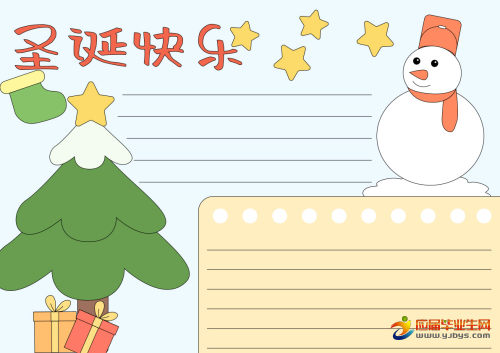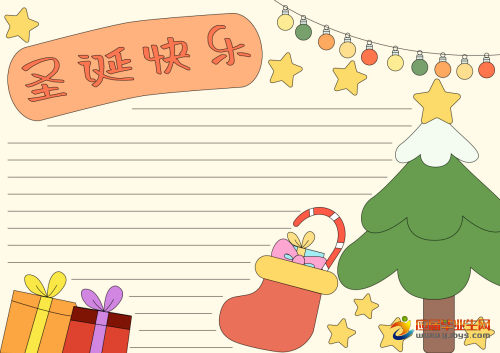關(guān)于圣誕節(jié)的英語手抄報資料
The History of Christmas
圣誕節(jié)的英語手抄報資料





圣誕節(jié)的來歷
Christmas is a Christian holiday that celebrates the birth of Jesus Christ. No one knows the exact date of Christ‘s birth, but most Christians observe Christmas on December 25. On this day, many go to church, where they take part in special religious services. During the Christmas season, they also exchange gifts and decorate their homes with holly, mistletoe, and Christmas trees. The word Christmas comes from Cristes maesse, an early English phrase that means Mass of Christ. The story of Christmas comes chiefly from the Gospels of Saint Luke and Saint Matthew in the New Testament.
The history of Christmas dates back over 4000 years. Many of our Christmas traditions were celebrated centuries before the Christ child was born. The 12 days of Christmas, the bright fires, the yule log, the giving of gifts, carnivals(parades) with floats, carolers who sing while going from house to house, the holiday feasts, and the church processions can all be traced back to the early Mesopotamians.
Many of these traditions began with the Mesopotamian celebration of New Years. The Mesopotamians believed in many gods, and as their chief god-Marduk. Each year as winter arrived it was believed that Marduk would do battle with the monsters of chaos. To assist Marduk in his struggle the Mesopotamians held a festival for the New Year. This was Zagmuk, the New Year‘s festival that lasted for 12 days.
The History of Santa Claus
圣誕老人的來歷
On the night before Christmas, all across the world, millions of children will be tucked in their beds while visions of sugarplums dance in their heads. When they awake they will check their stockings to see if Santa Claus has come.
Santa Claus has become the most beloved of Christmas symbols and traditions. The image of the jolly old elf flying in a sleiggh pulled by reindeers and leaving toys and gifts for every child is know worldwide.
Just like the season of Christmas, the history of the origins of Santa Claus is influenced by the customs and cultures of many countries, beginning in Asia Minor sometime around the 4th century AD. It was here that Bishop Nicholas became renowned for his exceptional generosity, especially to the very young. Many years later he became known as Saint Nicholas, the patron saint of children.
As time went on, adults began to dress in the manner of Saint Nicholas, dressed in Bishops vestments and carrying a staff., to re-enact the kindness of the saint. They went from house to house, asking if the children who lived there had been well behaved. In response to these visits, the children left their shoes outside the doors of their houses so that next morning they might find them filled with sweets and trinkets.
An Anglo-Saxon version eventually evolved and was known as Father Christmas. His character was a mixture of the Saint Nicholas and earthly perceptions of the gods Thor and Saturn. He wore robes decorated with ivy and holly and carried a switch to threaten unruly children, as well as a bag of toys to reward the well behaved.
【圣誕節(jié)的英語手抄報資料】相關(guān)文章:
圣誕節(jié)英語手抄報資料07-04
英語手抄報圣誕節(jié)資料07-01
圣誕節(jié)英語手抄報的資料06-18
圣誕節(jié)英語手抄報資料大全07-01
簡單的圣誕節(jié)英語手抄報資料07-01
最新圣誕節(jié)英語手抄報資料06-21